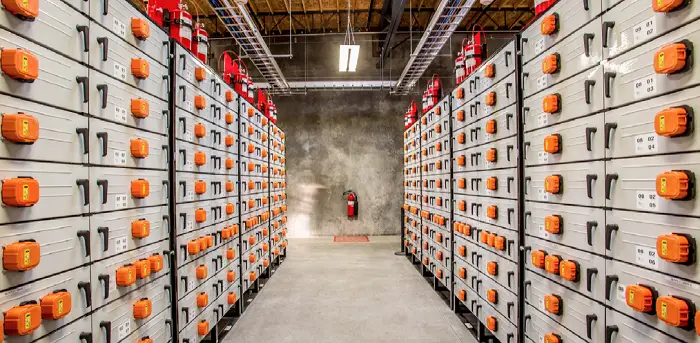The first large-scale storage system in Belgium has been installed at Peleman Industries in Puurs, Belgium. This is according to sustainable energy provider Eneco who installed Alfen’s energy storage system, named ‘The Battery’, to prevent energy supply disruptions.
The battery storage system enables Peleman to use its own generated energy from its two wind turbines as much as possible. The battery is as big as a shipping container and holds a capacity of 2 MWh hours, enough to power approximately 200 homes for 24 hours.
This is the first time a battery, located at a commercial site, is also being deployed to balance the frequency of the power grid in Belgium. The storage system is available for use by the central electricity grid.
Also read: Zambia, Zimbabwe signs US $5bn deal for Batoka Gorge hydro electricity project
Functions
Several months ago, issues with the electricity grid in South East Europe resulted in a drop in grid frequency which caused digital clocks to lag behind. The battery will function in such a way that when all Europeans collectively consume more electricity than is being produced, the battery can help make up the deficit, furthermore, when production of electricity is higher than consumption, the battery recharges.
By placing the battery on an industrial site and thus “behind-the-meter”, it avoids bottlenecks on the electricity grid which reduces grid investments. When there is no need to support the grid balance, the battery can store the energy generated by the wind turbines on the Peleman site. When the company needs this energy, the battery can supply the stored wind energy.
Grid electricity consumption
According to Esmeralda Peleman, CEO Peleman Industries, Peleman Industries seeks to reduce its grid electricity consumption by 10%. The project was initiated in November 2016, one month after signing the sustainability covenant with the municipality. Our ambition is to meet or exceed the CO2 reduction objectives set forth by the EU by 2020. The new battery fits this strategic ambition.
Next Kraftwerke is responsible for the management and control of the battery. The battery is connected through the Next Box, a remote-control unit, to the Next Pool. Via the Next Box, Next Kraftwerke is able to control the battery at all times as FCR is delivered continuously.
“The Next Box constantly measures the grid frequency. This way, the battery set-point is updated in real time to counteract any frequency deviation from 50 Hertz,” said Paul Kreutzkamp, Co-Founder and Co-Manager of Next Kraftwerke Belgium.

